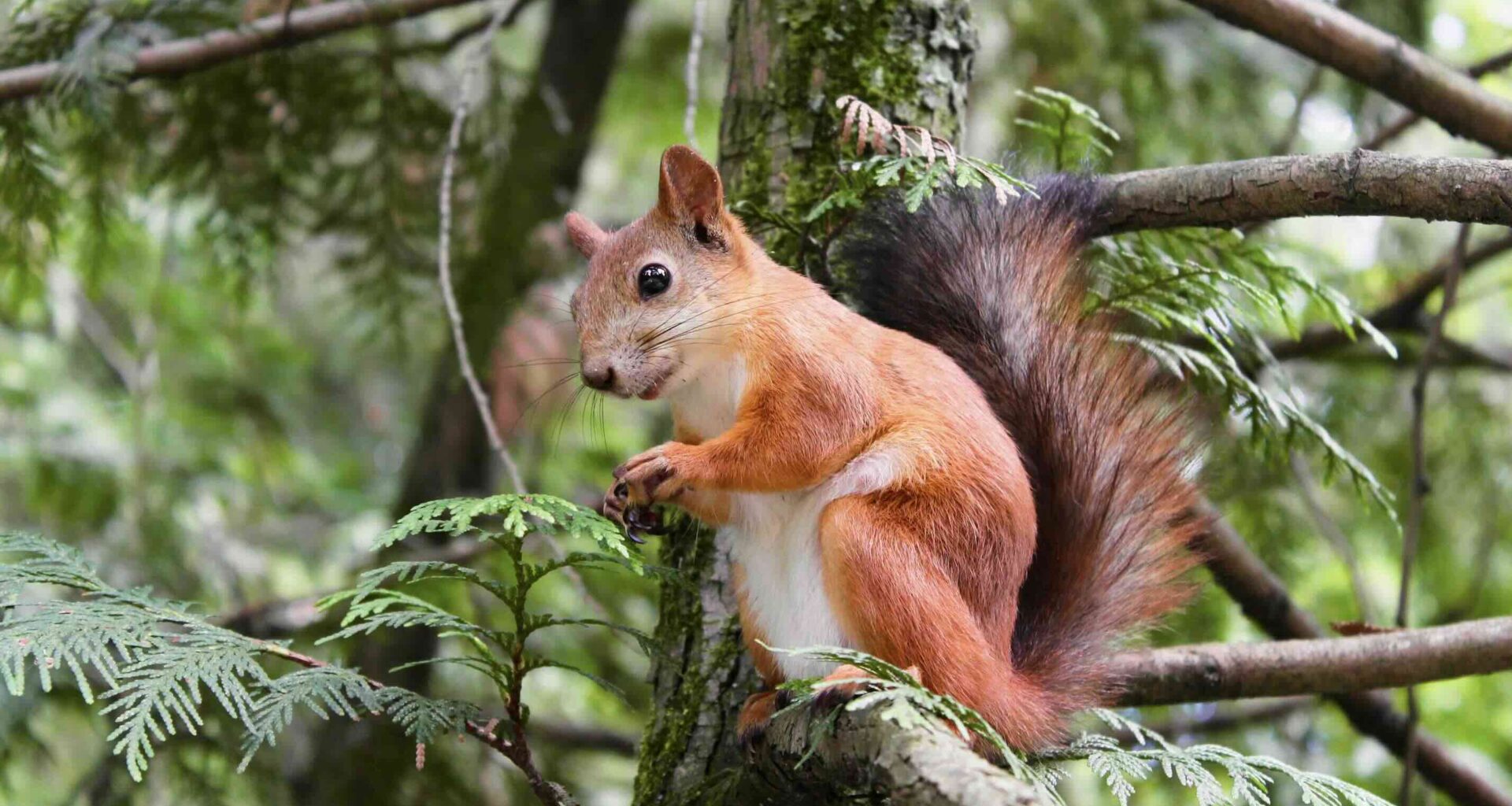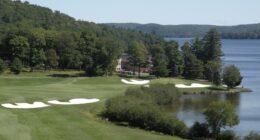Photo: Ilnur Kalimullin / Unsplash
Nobody has ever described a red squirrel as laid-back and casual. They seem to live with the accelerator nailed to the floor, zipping around trees and through branches with blinding speed.
Nor are they the fast but silent type. They may be the smallest squirrels in Ontario, but they don’t seem to know that. Any black squirrel that is perceived as an intruder will be chased away in a flurry of chattering and squeaking, every sound accompanied by a stomping of tiny feet and a flick of the tail. The same goes for gray jays and other Ontario birds, small dogs, and even owls: anything that might pose a threat is chased away.
That’s just standard red squirrel behaviour. And come spring, they ramp that up a few notches.
Ontario’s Red Squirrels
There are a couple of reasons for this. One is that late winter is the breeding season for red squirrels. When the females go into heat, males will chase each other relentlessly in hopes of winning her affection.
Those affections are short-lived, though – females are usually only in heat for a day, and almost as soon as she has mated, she leaves her partner or chases him away from her territory. A mere 31 to 36 days later, a litter of 3 to 6 kits will be born.
The other reason red squirrels are especially feisty at this time of year is because they are defending their food stores, caches of food that they rely on to keep themselves alive through the cold winter.
Superstar Food Storers
While most squirrel species store food for the winter, red squirrels have particularly large pantries. A grey squirrel will bury acorns and other nuts throughout their territory, hiding one or two nuts in each place and somehow remembering where most of them are.

Red squirrels, though, believe in going big when it comes to food storage. They can have as much as 50 litres of food hidden in a single cache! And while an individual squirrel may have several such caches, losing even one of them to an intruder is potentially catastrophic.
They build these massive stockpiles in late summer and fall. Their main food is conifer cones – pine, spruce, fir and hemlock. They bite through the stems of the green cones and drop them to the forest floor, then go around later and pick them up, carrying them to damp storage sites like hollow logs and tree cavities. The moisture keeps the cones from opening and losing their seeds.
A Change of Diet
Red squirrels also harvest mushrooms, laying them out on sunny branches to dry before adding them to the cache, along with maple keys, cherry pits, beechnuts and other protein-rich foods. They need these massive food stores to sustain their high energy levels. In a single day, a red squirrel might eat the seeds from 100 spruce cones.
When spring comes, they switch their diets a bit. They eat plant buds as they emerge, as well as insects and even the occasional bird egg or nestling.
And there’s a theory that red squirrels even helped invent maple syrup. In early spring when their food supplies are running low, red squirrels will bite the bark of sugar maples, so the sap runs out. But they don’t drink it right away. Instead, they let the sun evaporate some of the water from the sap, and return later to drink up the more concentrated sugar. Indigenous people, seeing this, realized the sap of the maple tree was sweet, and began experimenting themselves.
___________________
Andrew Wagner-Chazalon is the Managing Editor and CEO of Dockside Publishing and writes about the luxuries to be found in Muskoka and throughout Ontario.







